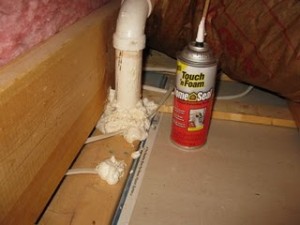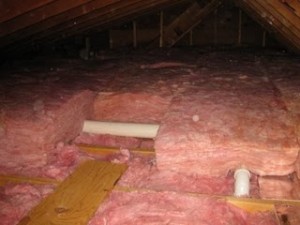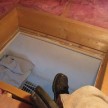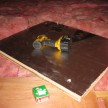Lower Heating and Cooling Costs
By Robert Robillard on Uncategorized
 Insulation and Air Leak Sealing
Insulation and Air Leak Sealing
Air leak sealing and insulating the “envelope” of your home — its outer walls, ceiling, windows, doors, and floors — is often the most cost effective way to improve energy efficiency and comfort. You can save up to 10-20% of your heating and cooling costs.
Attic insulation and air leaks are usually the biggest offender for heat loss in a home.
.
Save Energy By Sealing Leaks First
The importance of sealing air leaks throughout the home to heat loss and stop drafts as well adding insulation to block heat loss in winter and heat gain in summer goes a long way toward lowering heating and cooling costs.
Insulation works best when air is not moving through or around it. So it is very important to seal air leaks before installing insulation to ensure that you get the best performance from the insulation.
Many air leaks and drafts are easy to find because they are easy to feel — like those around windows and doors. But holes hidden in attics, basements, and crawlspaces are usually bigger problems. Sealing these leaks with caulk, spray foam, or weather stripping will have a great impact on improving your comfort and reducing utility bills.
Homeowners are often concerned about sealing their house too tightly; however, this is very unlikely in most older homes. A certain amount of fresh air is needed for good indoor air quality and there are specifications that set the minimum amount of fresh air needed for a house.
After any home sealing project, have a heating and cooling technician check to make sure that your combustion appliances (gas- or oil-fired furnace, water heater, and dryer) are venting properly.
.
Adding Insulation

Insulation keeps your home warm in the winter and cool in the summer.
There are several common types of insulation — fiberglass (in both batt and blown forms), cellulose, rigid foam board, and spray foam.
When correctly installed with air sealing, each type of insulation can deliver comfort and lower energy bills during the hottest and coldest times of the year.
Insulation performance is measured by R-value — its ability to resist heat flow. Higher R-values mean more insulating power. Different R-values are recommended for walls, attics, basements and crawlspaces, depending on your area of the country.
To get the biggest savings, the easiest place to add insulation is usually in the attic. A quick way to see if you need more insulation is to look across your uncovered attic floor. If your insulation is level with or below the attic floor joists, you probably need to add more insulation.
.
Attic Insulation Recommendation
The recommended insulation level for most attics is R-38 (or about 12–15 inches, depending on the insulation type). In the coldest climates, insulating up to R-49 is recommended.
Also don’t forget your basement insulation which can also make a huge difference.
 Insulation and Air Leak Sealing
Insulation and Air Leak Sealing




















